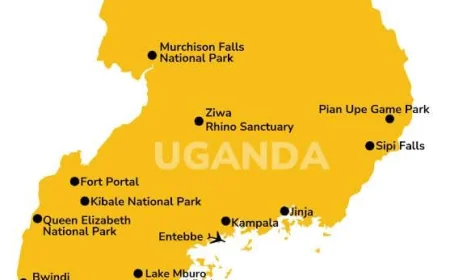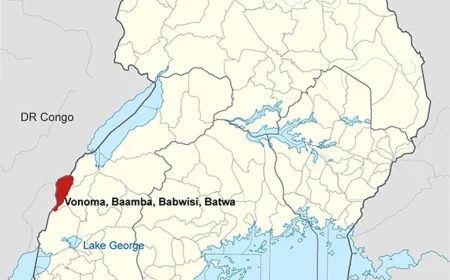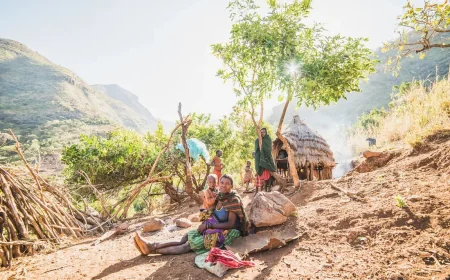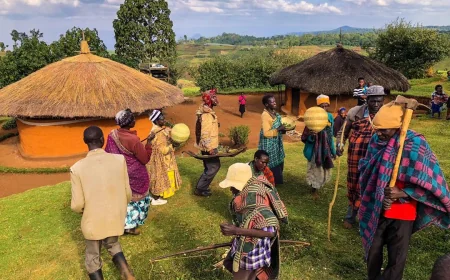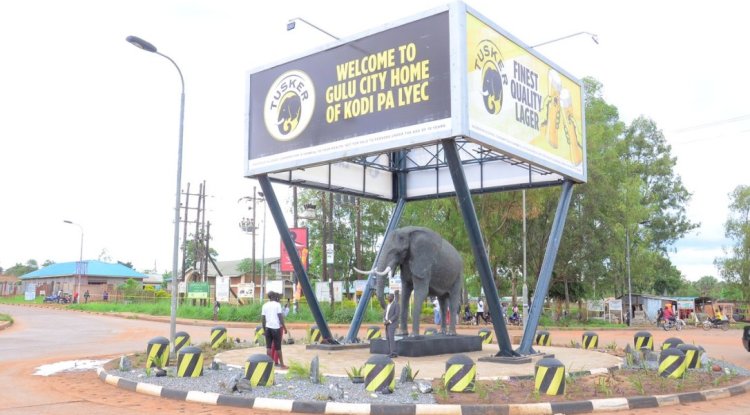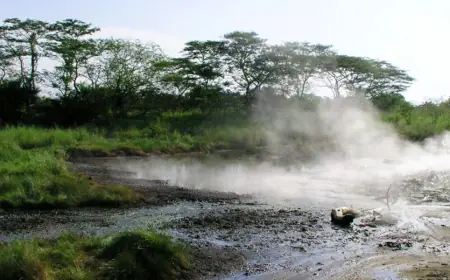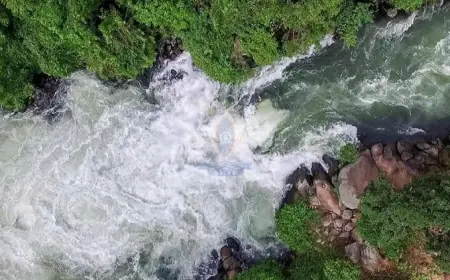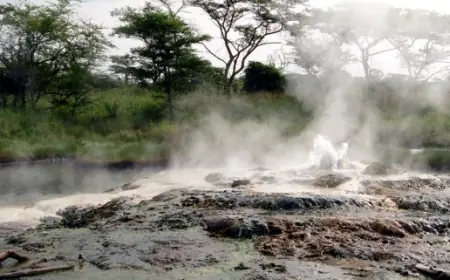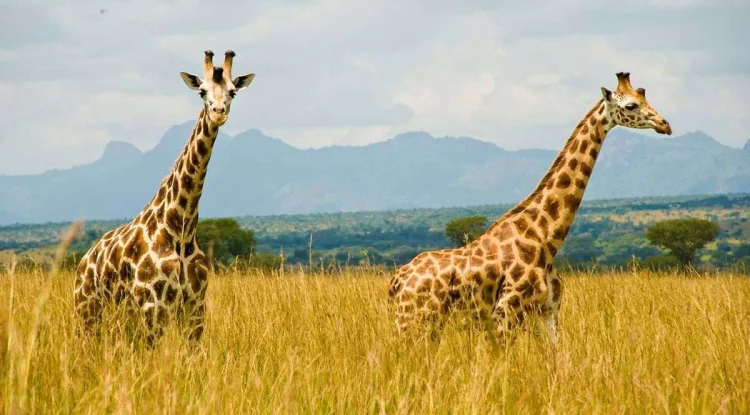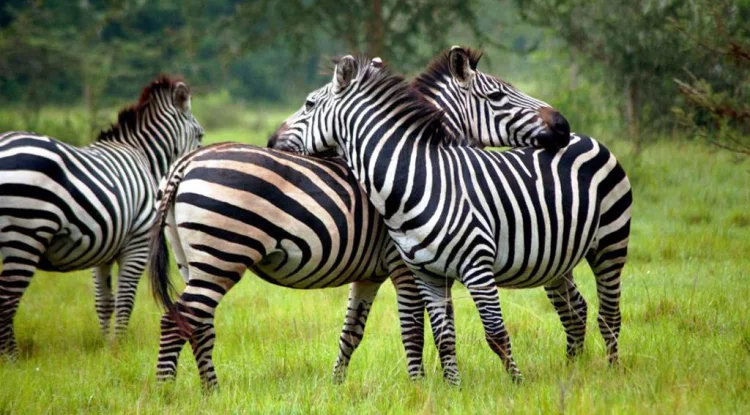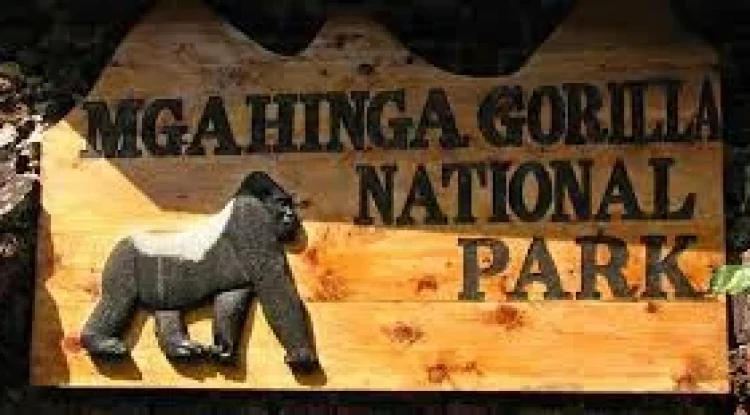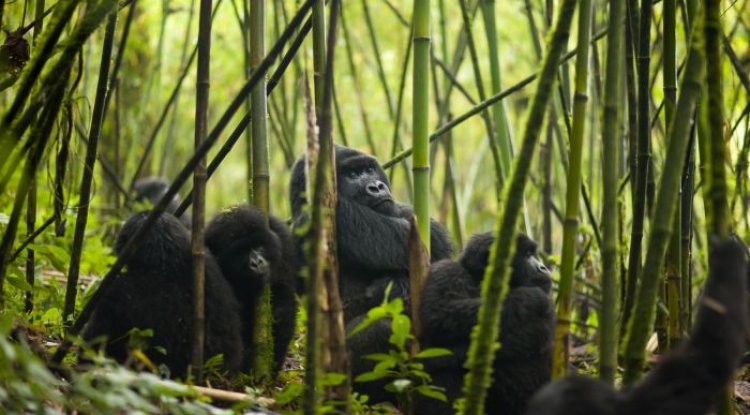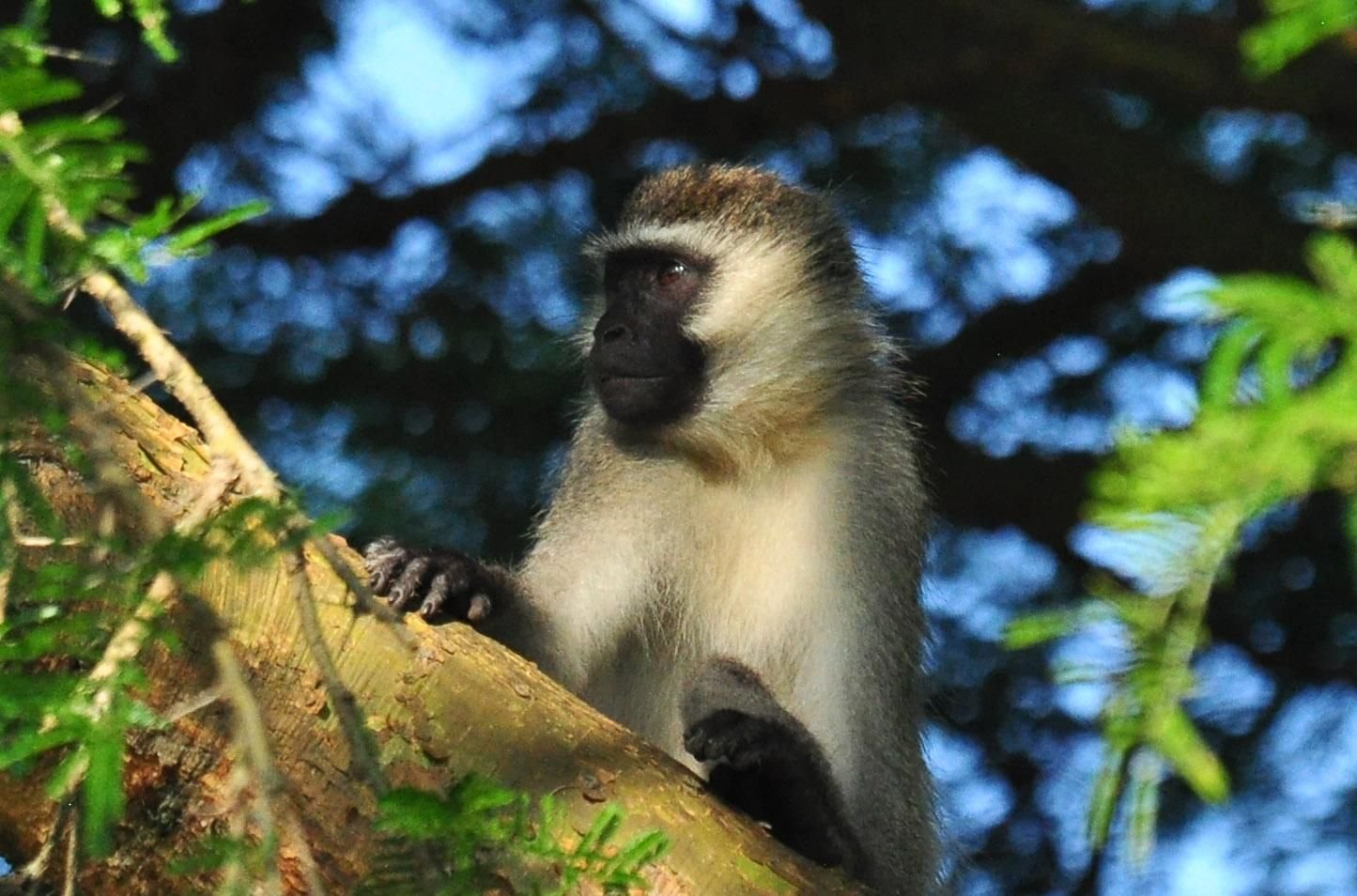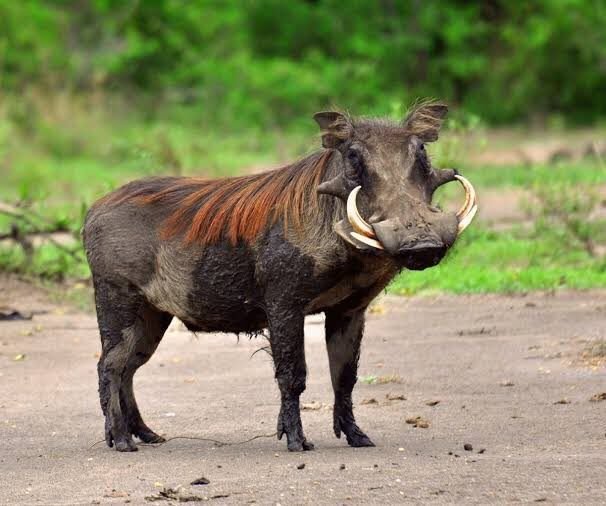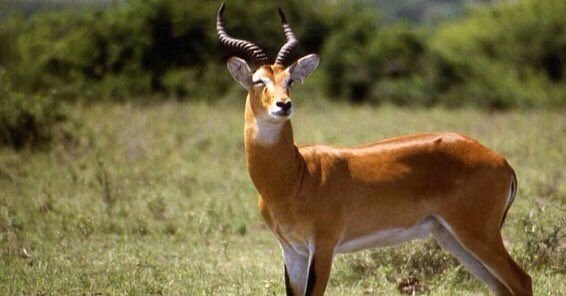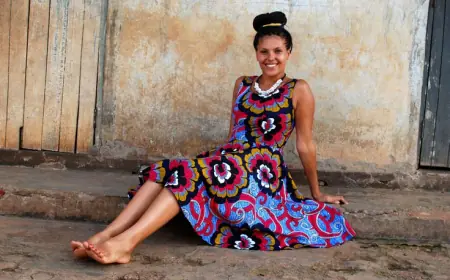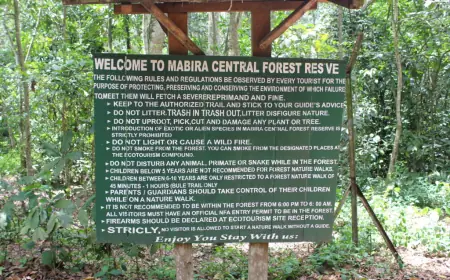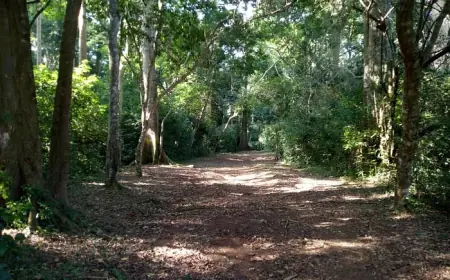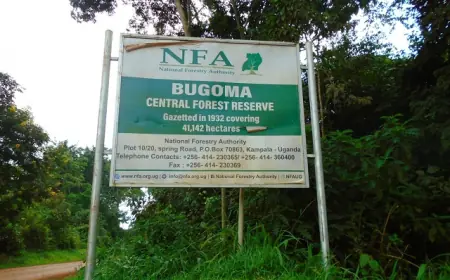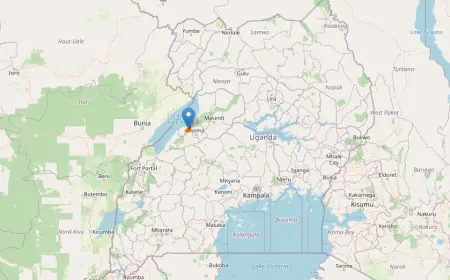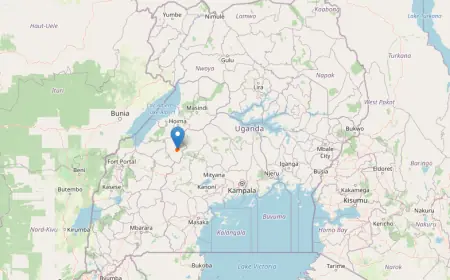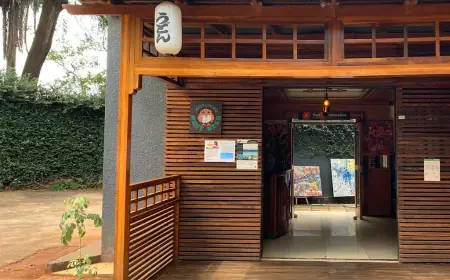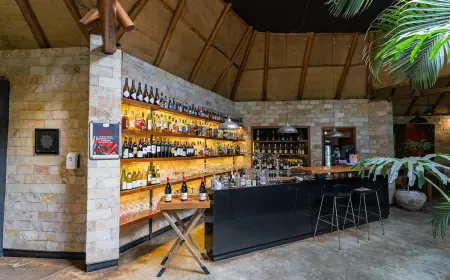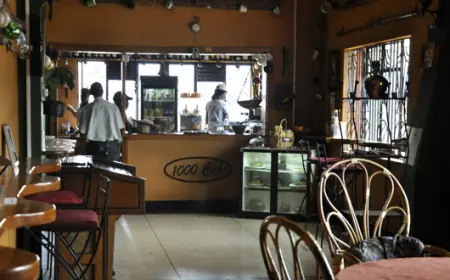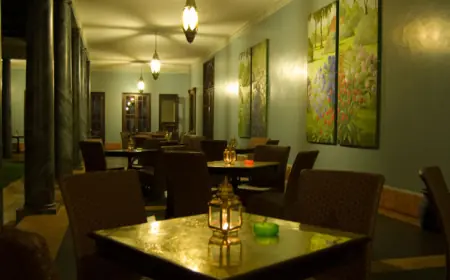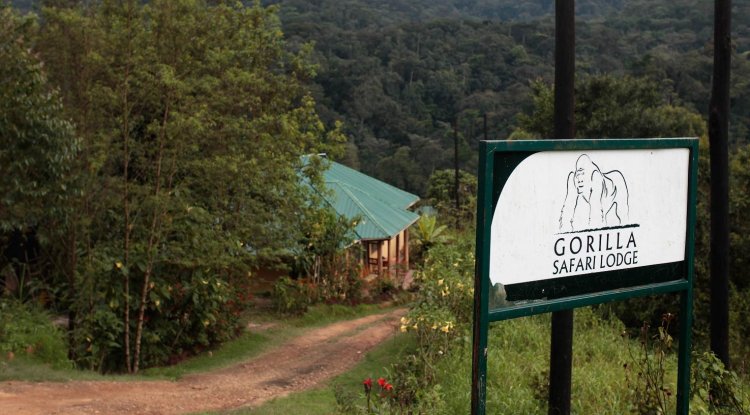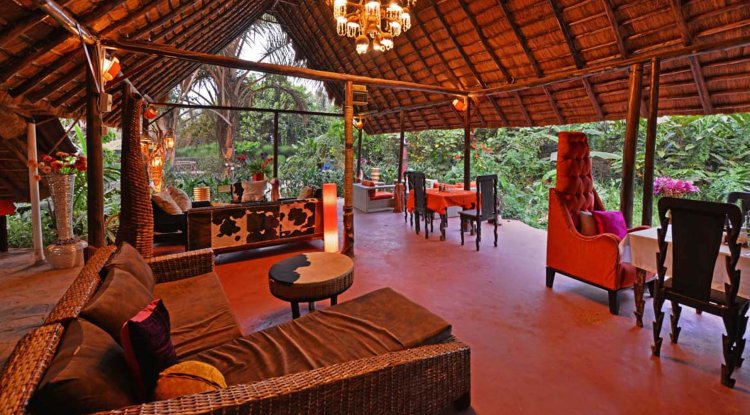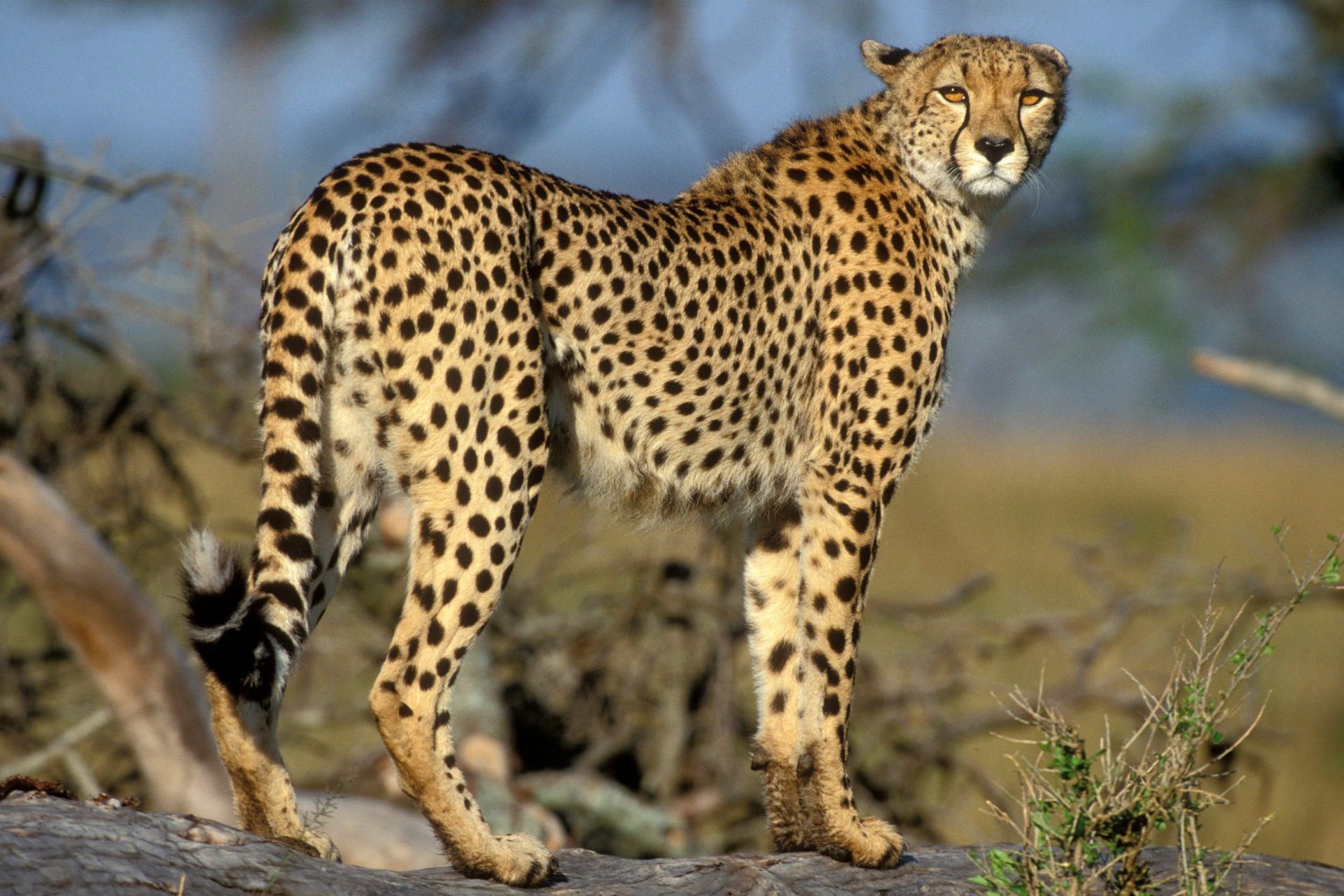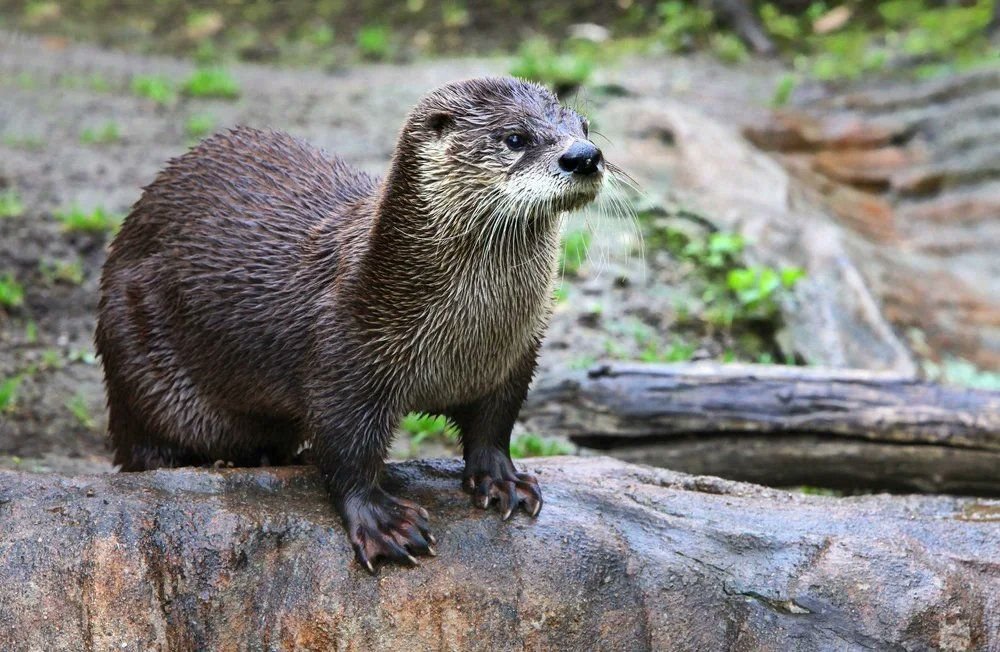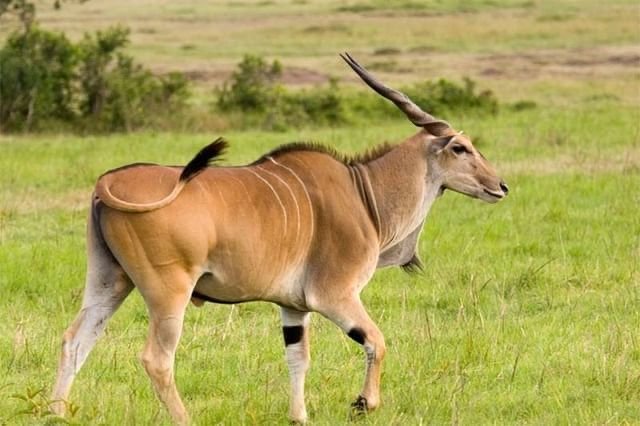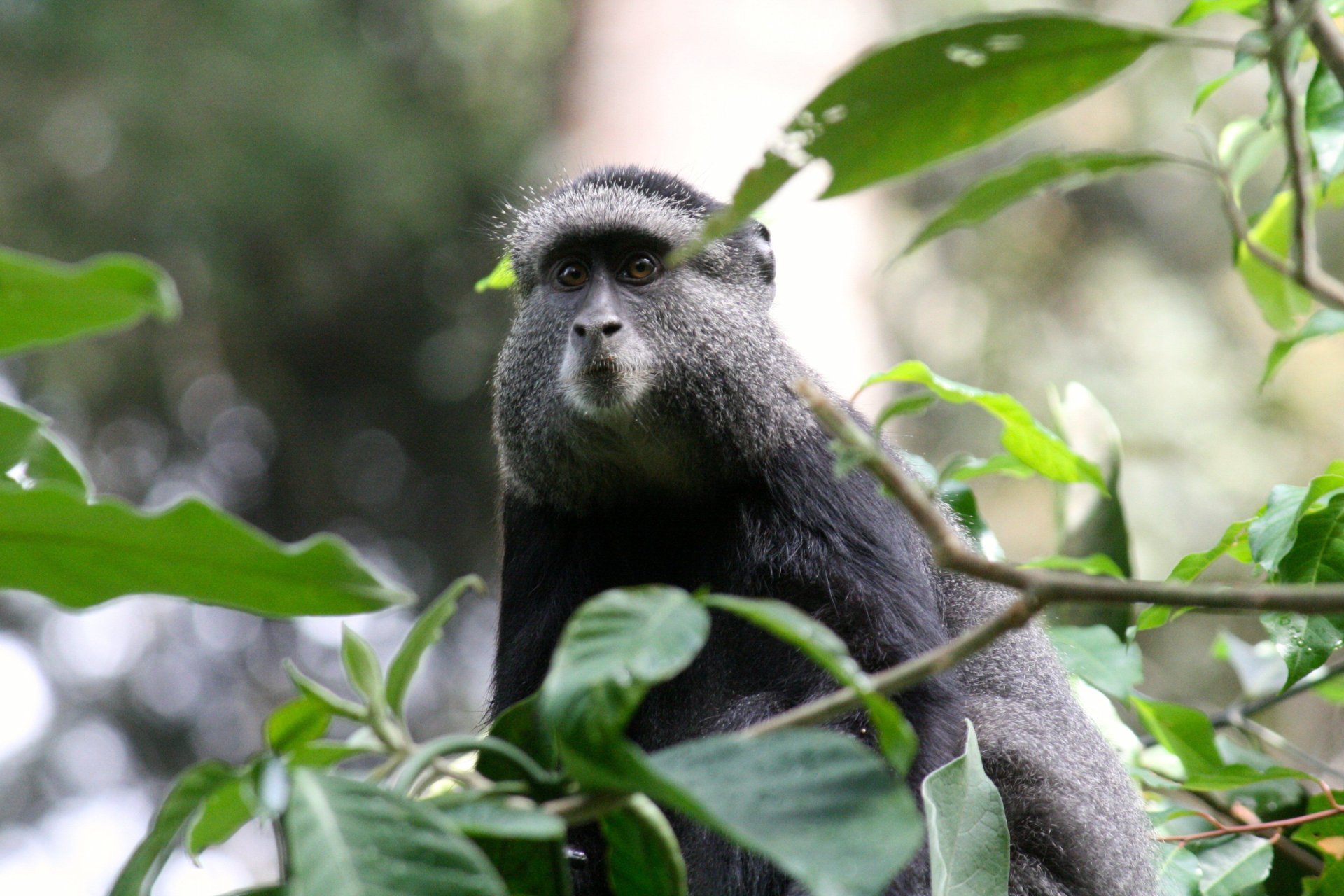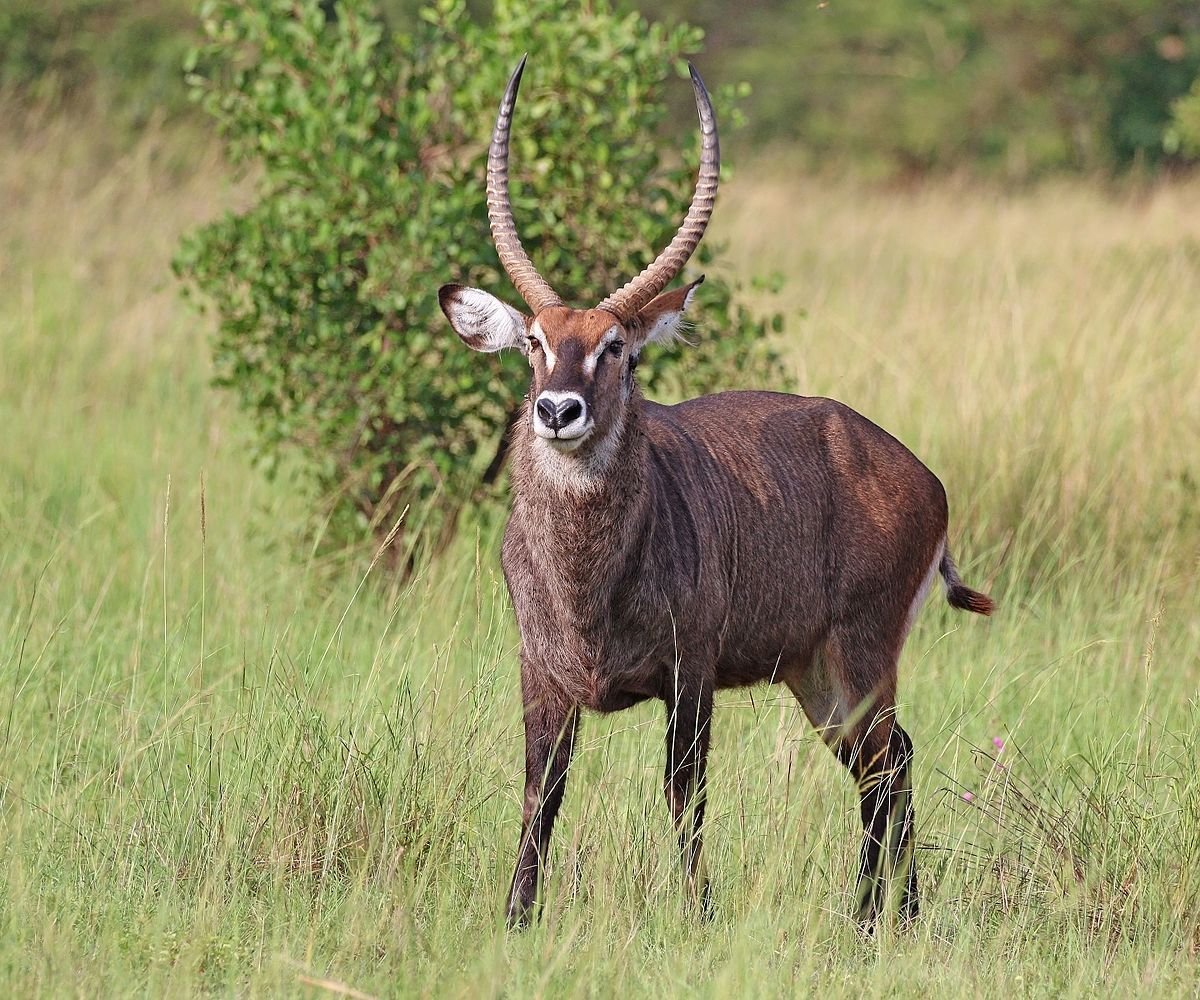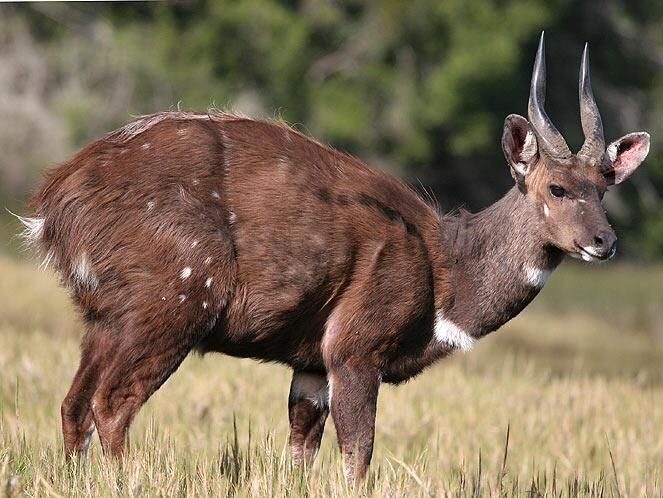Sitatunga
The sitatunga resembles the bushbuck and is connected to it genetically and ecologically; both are semi-aquatic tropical antelopes. Its natural habitats span six of Uganda's national parks. You'll have your best chance of seeing it in the Katonga Wildlife Reserve on a safari.
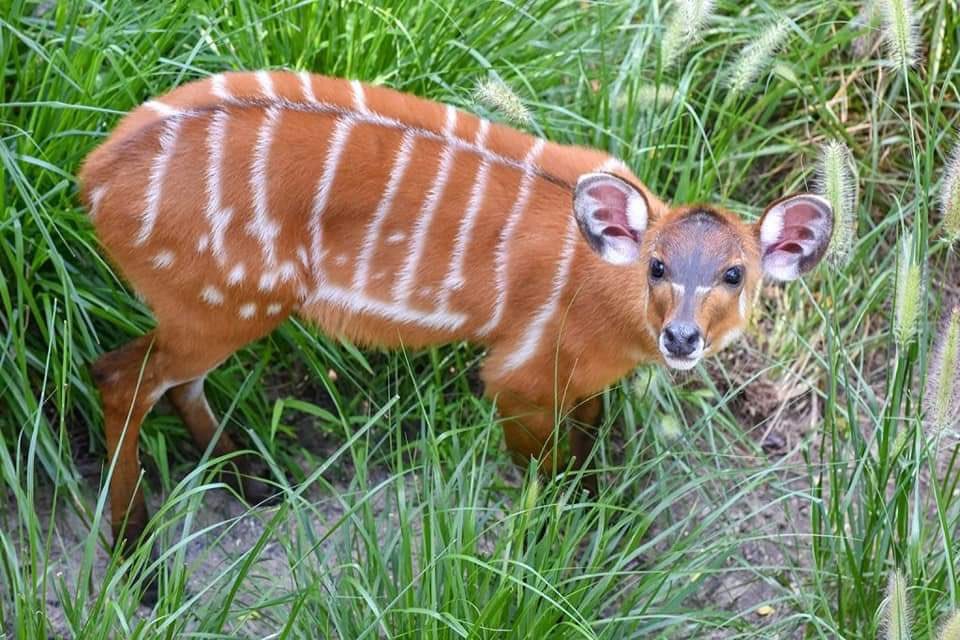
The sitatunga, also known as the marshbuck (Tragelaphus spekii), is an animal that can only be found in wet environments. They can be found in the region's seasonal swamps, marshy forest clearings, riparian thickets, and mangrove wetlands, among other places.
The sitatunga is an antelope of average size. The sexes look different, with males being much bigger than females.
Only the males have horns, which range in length from 45 to 92 cm (18 to 36 inches) and are helical in shape with one or two twists. Except for their pelage and spoor, nyala and sitatunga are virtually indistinguishable. Speke pointed out that even though the sitatunga is "closely related" to the waterbuck, it is easy to tell them apart because the waterbuck has stripes and the sitatunga does not.
This species of antelope has modified its body and legs to adapt to life in the swamps. The long and spread-out hooves of the male are a distinctive feature.
Sitatunga mannerisms.
The Sitatunga are nocturnal and nocturnally active animals that spend most of their time feeding in the hours immediately following sunrise, during the final one to two hours before nightfall, and throughout the night. They spend most of their time sitting still, sleeping in reed beds and other flat places during the heat of the day. They rarely venture out of the swamp during daylight hours. Even while sitatunga typically live alone or in pairs, they have occasionally been seen in bigger groups. A total of nine individuals, including an adult male, four adult females, and four juveniles, were documented in research conducted in Kenya. A loose group may emerge, although there is little communication between individuals. The majority of individuals only hang out with others of the same sex.
A sitatunga has no sense of territory. Males may use their horns for a variety of purposes, including locking horns with rival males and destroying plants. Threat displays consisting of elevating the forelegs while keeping the hind legs firmly planted on the ground are possible. If two sitatunga are interacting, they will touch noses, and then they may lick each other and nibble. Animals who are scared could stand stock still, raising one leg and raising the hair on the back of its neck. When the sitatunga begins its nightly series of coughs or barks, other animals in the area may join in, and the commotion can be heard from miles away. Possibly employed as a warning to other females, this barking could be used by females as a form of territorial defence. During the mating season, males will often let out a deep bellow when they encounter a female or a group of females. While eating, a soft squeaking noise may be made. Mothers bleat to their young as a means of communication.
They can swim well, but the crocodile danger means that the sitatunga can only swim in water where there is plenty of vegetation.
The sitatunga, like the waterbuck, is frequently referred to as an "aquatic antelope" because of its strong relationship with water. After a meal in the water, they would often dry themselves in the sun. Lions, wild dogs, crocodiles, and leopards are among the sitatunga's natural enemies.
Reproduction of the sitatunga.
Females become sexually mature around the age of 12 months, while it takes males an extra 15 months. Every season is a breeding season for these animals. Males show polygyny when they compete for females at mating events where there are a lot of them. The male in rut bends down to sniff the female's vulva as she stands. There may be a delay in the female's actions or responses. If the female runs away, the male still follows after her without stopping or displaying any signs of haste. When a female is receptive, she will raise her head with her lips open, and the male will attempt to mount her. The female bows her head downward as the male mounts her, resting his head and neck on her back while he straightens his forelegs. While the two are together, the male takes precautions to ensure that no other male comes near the female.
After an approximately eight-month pregnancy, around one calf is born. Though the dry season may see a higher rate of parturition, it occurs at all times of the year.
When a calf has given birth to many calves, the little ones still stick close to the calf. About six months are spent with the mother suckling and licking her calf. The calf often loses its footing and falls into bodies of water as it learns the unique walk of the sitatunga.
Intake of a Sitatunga diet.
In terms of diet, Sitatunga are both picky and opportunistic. Fresh grass, sedges, and browse make up the bulk of their diet. We suggest bullrushes (Typha), sedges (Cyperus), and aquatic grasses (Vossia, Echinochloa, Pennisetum, Leersia, Acroceras, and Panicum).
In swamps where the water level changes a lot throughout the year, eating habits may also change. The sitatunga, like the gerenuk, may use its hind legs to reach higher limbs of trees or even drag them down with its horns.
The best places in Uganda to witness the rare sitatunga.
Six of Uganda's national parks provide ideal habitat for the sitatunga. The Katonga Wildlife Reserve is the only place in Africa where you have a good chance of seeing it.
The Katonga Wildlife Reserve is located in western Uganda on the banks of the Katonga River, where you can spot sitatunga and many other related antelope species.
Located 200 kilometres west of Kampala, the 211 square kilometre (81 square mile) reserve is home to a wide variety of flora and fauna that can only be found in a wetland habitat.
What's Your Reaction?
 Like
0
Like
0
 Dislike
0
Dislike
0
 Love
0
Love
0
 Funny
0
Funny
0
 Angry
0
Angry
0
 Sad
0
Sad
0
 Wow
0
Wow
0
